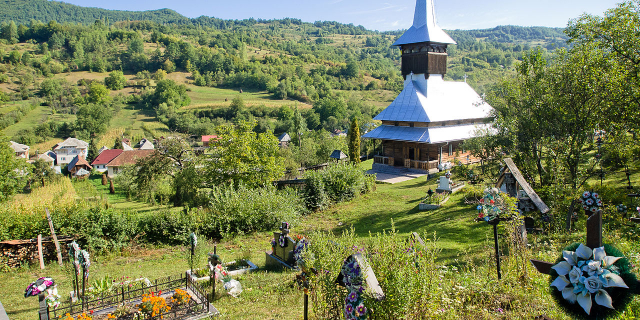Context of Gorals
The Gorals (Polish: Górale; Goral dialect: Górole; Slovak: Gorali; Cieszyn Silesian: Gorole), also known as the Highlanders (in Poland as the Polish Highlanders) are an indigenous ethnographic or ethnic group primarily found in their traditional area of southern Poland, northern Slovakia and in the region of Cieszyn Silesia in the Czech Republic, where they are known as the Silesian Gorals. There is also a significant Goral diaspora in the area of Bukovina in western Ukraine and in northern Romania, as well as in Chicago, the seat of the Polish Highlanders Alliance of North America.
More about Gorals
In the 12th century, Vlach shepherds migrated to the region, gradually moving northwest from the Balkan peninsula over the Carpathian Mountains and settling on Polish lands there.[1] In the 16th and 17th centuries, Gorals settled the upper Kysuca and Orava rivers and part of northern Spiš in Slovakia,[2] which at the time were part of the Kingdom of Hungary.[3] [4][5][6] In the 19th century, between 1803–1819, the Gorals migrated to Bukovina.[7]
Due to local privileges and rights, including the Vlach law, Gorals enjoyed freedom from serfdom and had a large amount of autonomy.[1] In 1651, the Gorals and local peasantry of Podhale rebelled against the Polish nobles (szlachta) in what became the Kostka-Napierski uprising, led by the adventurer and officer from the Polish army captain Aleksander Kostka Napierski. A film was produced about the uprising (Podhale w ogniu) in 1956, and distributed in many languages across the Eastern Bloc.[8][9][10] A second peasant rebellion in Podhale occurred in 1669, when Gorals and local peasants rebelled against high taxes and oppressive rule imposed on them by the nobility. The first Polish national opera, titled Krakowiacy i Górale (Cracowians and Gorals) composed by Wojciech Bogusławski premiered in 1794.[11]
During World War II, Nazi Germany sought to Germanize the Gorals, and include them in the resettlement plans.[12] Under Nazi racial laws, the majority of Poland's population and its minorities were viewed as "undesirable" and subject to special statutes, slave labour and police law.[13] However, Nazi racial theorists considered the 27,000 strong Goral population as a separate ethnic group from the Poles.[14] Termed Goralenvolk, they were deemed part of the "Greater Germanic Race" and given separate (milder) treatment from other Poles.[15][16]
...Read moreRead lessIn the 12th century, Vlach shepherds migrated to the region, gradually moving northwest from the Balkan peninsula over the Carpathian Mountains and settling on Polish lands there.[1] In the 16th and 17th centuries, Gorals settled the upper Kysuca and Orava rivers and part of northern Spiš in Slovakia,[2] which at the time were part of the Kingdom of Hungary.[3] [4][5][6] In the 19th century, between 1803–1819, the Gorals migrated to Bukovina.[7]
Due to local privileges and rights, including the Vlach law, Gorals enjoyed freedom from serfdom and had a large amount of autonomy.[1] In 1651, the Gorals and local peasantry of Podhale rebelled against the Polish nobles (szlachta) in what became the Kostka-Napierski uprising, led by the adventurer and officer from the Polish army captain Aleksander Kostka Napierski. A film was produced about the uprising (Podhale w ogniu) in 1956, and distributed in many languages across the Eastern Bloc.[8][9][10] A second peasant rebellion in Podhale occurred in 1669, when Gorals and local peasants rebelled against high taxes and oppressive rule imposed on them by the nobility. The first Polish national opera, titled Krakowiacy i Górale (Cracowians and Gorals) composed by Wojciech Bogusławski premiered in 1794.[11]
During World War II, Nazi Germany sought to Germanize the Gorals, and include them in the resettlement plans.[12] Under Nazi racial laws, the majority of Poland's population and its minorities were viewed as "undesirable" and subject to special statutes, slave labour and police law.[13] However, Nazi racial theorists considered the 27,000 strong Goral population as a separate ethnic group from the Poles.[14] Termed Goralenvolk, they were deemed part of the "Greater Germanic Race" and given separate (milder) treatment from other Poles.[15][16]
^ a b "Skąd pochodzą górale? Inwazja Wołochów zmieniła historię polskich gór". Nasza Historia. 23 November 2017. Retrieved 26 April 2022. W XIII w. na ziemiach polskich zaczęli się pojawiać Wołosi, osadnicy z Bałkanów, którym udało się ujarzmić Karpaty i wprowadzić tu gospodarkę pasterską. ^ Denes Loczy; Miloš Stankoviansky; Adam Kotarba (3 January 2012). Recent Landform Evolution: The Carpatho-Balkan-Dinaric Region. Springer Science & Business Media. pp. 149ff. ISBN 978-94-007-2447-1. ^ Karoly Kocsis; Eszter Kocsisne Hodosi (1 April 2001). Ethnic Geography of the Hungarian Minorities in the Carpathian Basin. Simon Publications LLC. pp. 45–46. ISBN 978-1-931313-75-9. ^ Redakcja (2017-11-23). "Skąd pochodzą górale? Inwazja Wołochów zmieniła historię polskich gór". Nasza Historia (in Polish). Retrieved 2022-03-13. ^ "Górole Historia". www.nowebystre.pl. Retrieved 2022-03-13. ^ "Górale Podhalańscy - Etnozagroda". www.etnozagroda.pl. Retrieved 2022-03-13. ^ Halina Karaś. "2.6. Gwary polskie za granicą". ^ "Nieznane polskie powstania". Rzeczpospolita (in Polish). Retrieved 2022-01-30. ^ Drożdż, Mateusz (2020-07-21). "Aleksander Kostka-Napierski. Chłopski bohater czy zdrajca?". Hrabia Tytus – Twój przewodnik po historii (in Polish). Retrieved 2022-03-13. ^ "Zdrajca, buntownik czy bohater? Wielkie ambicje i straszny koniec Aleksandra Kostki-Napierskiego". Do Rzeczy (in Polish). 2021-07-18. Retrieved 2022-03-13. ^ Wolff, Larry (9 January 2012). The Idea of Galicia; History and Fantasy in Habsburg Political Culture. Stanford University Press. p. 57. ISBN 978-0-8047-7429-1. ^ Martyn Housden (4 January 2002). Hitler: Study of a Revolutionary?. Routledge. pp. 138–. ISBN 978-1-134-71369-1. ^ Diemut Majer (2003). "Non-Germans" Under the Third Reich: The Nazi Judicial and Administrative System in Germany and Occupied Eastern Europe with Special Regard to Occupied Poland, 1939-1945. JHU Press. pp. 533ff. ISBN 978-0-8018-6493-3. ^ Mark Levene (December 2013). Annihilation. Vol. II: The European Rimlands 1939–1953. OUP Oxford. pp. 45ff. ISBN 978-0-19-968304-8. ^ "Pod Giewontem. Losy mieszkancow Podhala 1939-1956". Podhalański Portal Informacyjny Podhale24.pl. September 12, 2011. Retrieved April 21, 2012. ^ "Historia rodziny Apostołów". Lista świadków historii (in Polish). Stowarzyszenie Auschwitz Memento. Archived from the original on January 23, 2015. Retrieved April 21, 2012.























